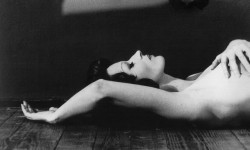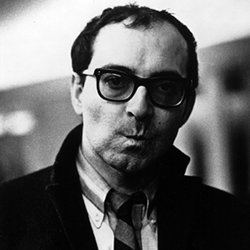
Satyajit Ray, Madhabi Mukherjee, and a Trilogy of Spaces of Female Identities: Charulata (1964) - NP Approved

Cast: Soumitra Chatterjee, Madhabi Mukherjee, Shailen Mukherjee
Director: Satyajit Ray
Country: India
Genre: Drama
Official Website: Here
Editor’s Notes: Charulata was just recently released on Criterion Blu-ray and DVD.
Though Charulata’s drama takes place practically inside the upper-middle class abode of married couple Bhupati (Sailen Mukherjee) and Charu (Madhabi Mukherjee) and could be described as a love triangle, the characters’ preoccupations and relationships with each other make the film not just about a family and suppressed romance but also about a woman’s desire, class, dissent in the colonial era, and Bengali literary culture. With its literary references and the act of writing translated into cinematic terms to elaborate the above, Charulata is one of Satyajit Ray’s most infinitely insightful films and one of the most fully realised in terms of cast-crew collaborations and understanding the uniqueness of his medium.
When Bhupati and Charu become host to Charu’s brother and his wife and Bhupati’s cousin Amal (Soumitra Chatterjee), the social world from which the couple and their house seemed to be cut off enters their lives and ultimately forces them to confront the reality of their relationship. Between these five characters, Ray threads separate but interlocking situations that reveal social pressures along the private-public divide: the latent romantic feelings between Charu and Amal; Charu’s brother’s feelings of resentment and ambition vis-à-vis Bhupati, who has hired him to work for his newspaper; and Bhupati’s political idealism channeled through his printing press and newspaper.
The striking quality of Amal and Charu’s first scene together is emblematic of the way Ray builds up their aesthetic and emotional affinity, in contrast to the terse way that Ray establishes Charu and Bhupati’s aesthetic and emotional distance early to reflect the nature of their relationship.
Though neglected by Bhupati, who even says that his newspaper is Charu’s rival for his attention, Charu fulfills the role of the efficient, amiable wife. She embroiders a handkerchief for him; observes her cloistered world and the one outside of it through the windows; and reads voraciously to fill up her time. Ray conveys with incredible economy Charu and Bhupati’s married life during the film’s first fifteen minutes: he in his office, connected to the printing press, occupied with news-politics and the English word; she in the drawing room with the bookshelf, occupied with literature and the Bengali word. Both are concerned with imagination, he from a political perspective in the public, colonial context and she from a personal perspective in the private, traditional context.
The emptiness of their paradoxical harmony becomes most acute when relatives visit them, most importantly Amal, who has graduated from university and intends to live with the couple to focus on his writing. Like the storm that makes its appearance on the day of his arrival, Amal’s entry into Charu’s life is dramatic, disorienting…and exciting. He literally storms through the doors towards Charu and immediately invites the literary-based rapport that will develop between them with his first line to her: “Have you read [Bankim Chandra Chatterjee’s] Anandamath?”

The striking quality of Amal and Charu’s first scene together is emblematic of the way Ray builds up their aesthetic and emotional affinity, in contrast to the terse way that Ray establishes Charu and Bhupati’s aesthetic and emotional distance early to reflect the nature of their relationship. Whether separate or together, Ray populates the film with details related to vision and writing to express Amal and Charu’s affinity. In several scenes, Charu looks at her surroundings including Bhupati through opera glasses; during a conversation with Bhupati, Amal puts a magnifying glass to his eye. When Charu goes to the bookshelf to get a book in the prologue, she sings Bankim’s name; when Amal goes to the same bookshelf to look for literary magazines, he also sings.
The drawing room with the bookshelf that links Charu and Amal thus becomes one of their shared spaces, where Amal will sing to her at one point. Another shared space is the garden. In a series of celebrated scenes that denote the passing of time and the development of their rapport, the two converse in the garden, she on a swing, he lying down on a mat in the ground. The garden is also the site of their individual literary inspirations, both of which get published. If Charu has a rival for Bhupati’s attention in his printing press, so Bhupati develops a rival for Charu’s affection in the writer Amal. Such are the ways in which Ray makes the word brilliantly visual and interwoven into the narrative and characters. Ray visually links Charu and Amal further by devoting to each of them a musical montage of their respective acts of writing.
Charu’s face then becomes the object of the camera’s gaze, as she puts down the opera glasses. Through Mukherjee, Charu’s face is an intricate text unto itself.
Chatterjee as Amal is at his most mischievous, charismatic, and sensitive. However initially reluctant he may be outwardly when Bhupati asks him to keep Charu company and draw out her literary interest/talent, he takes it all in stride. A substantial portion of the film sees the two together while Bhupati and Charu are hardly shown in the same space, let alone communicating. If they are shown thus, they hardly face each other. Yet the same could be said of Amal and Charu. A tender tension surfaces between their sparse looks at each other and their playful banter. They also discuss literature and provoke each other to write, in a way that Amal cannot do with Charu’s uneducated and less introspective sister-in-law, hence the somewhat comical scene of Amal reading aloud portions of Bankim’s essay on the modern versus traditional woman to the two women.
As Ray himself once said, Mukherjee as Charu outshines her cast members. Whether it be entertaining nonchalant curiosity towards her confined circumstances and Bhupati; realising her feelings towards Amal and actively giving in to them because it gives her pleasure, harnessing a creative voice and breaking through the private-public divide by having her story published; or being consumed by her love all the more because of the impossibility of it, Mukherjee is stunning. Her performance is all the more remarkable because Ray oftentimes does not give her words, just his camera, to capture this range of feelings. This range is at its most heightened display while Charu sits on the swing in the garden, using her opera glasses to look around her while Amal is nearby. She turns her gaze to several things, and then to Amal, who is busy writing. Charu’s face then becomes the object of the camera’s gaze, as she puts down the opera glasses. Through Mukherjee, Charu’s face is an intricate text unto itself.
DVD Supplements
Among other things, splendid new interviews with Mukherjee and Chatterjee, as well as a set of interviews with scholars on Ray’s adaptation of Rabindranath Tagore’s novella Nastanirh/The Broken Nest on which Charulata is based, accompany this DVD edition.
Related Posts
![]()
Rowena Santos Aquino
![]()
Latest posts by Rowena Santos Aquino (see all)



























